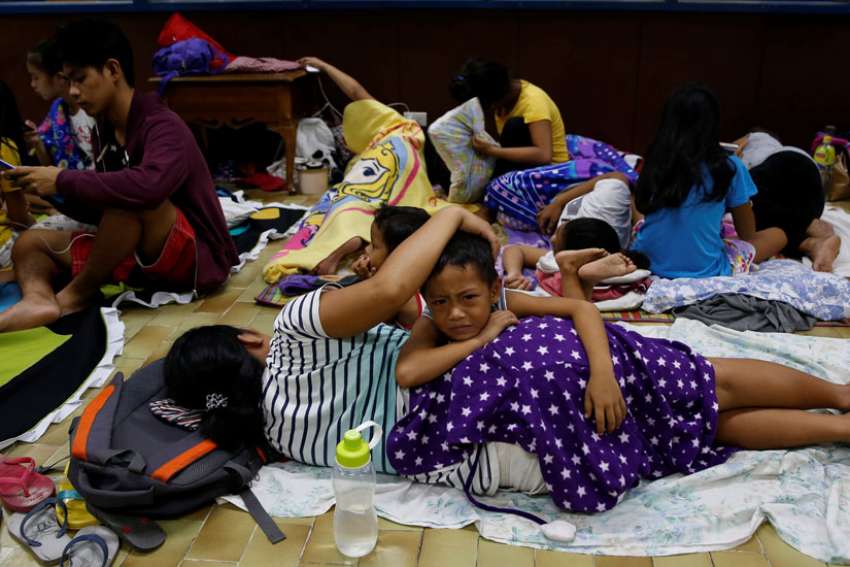There are eight dead and two missing, power out in at least 60 municipalities, 42 roads and four bridges still impassible because of flooding and mudslides, 7,600 destroyed houses and 26,865 partially damaged houses. Church agencies are bringing food, sleeping bags, shelter repair kits and helping people figure out how they can get back to work and providing for their families, according to a noon Friday report from NASSA-Caritas Philippines.
There are 18,156 families in six regions who were evacuated from their homes either just before or while the storm hit with sustained winds of 225 kilometres per hour and gusts of 315. Given an average of almost five people per Filipino family, that translates to 90,589 individuals in emergency shelters – many of them churches and church halls.
Before Typhoon Haima hit the Philippines Oct. 19, Canadian Catholic Organization for Development and Peace staff responsible for programming in the Philippines were already planning to travel to the Pacific island nation to commemorate the third anniversary next month of Typhoon Haiyan – the most powerful storm to make landfall in recorded history. While there, Development and Peace staffer Jess Agustin will witness the inauguration of the Pope Francis Learner Centre – part of the typhoon-proof Pope Francis Village which Development and Peace has been building with local labour and input.
The Church in Canada raised over $12 million for Development and Peace efforts to help Filipinos recover from Typhoon Haiyan.
As well as seeing the first storm proof houses built with Development and Peace funds in Tacloban, Agustin said he will be there “to monitor government reconstruction, which has been dismal,” he said.
Along with Filipino Church bodies, Development and Peace is urging the Filipino government to centralize disaster response and rebuilding and get it out of the hands of local political power brokers.
The most recent Typhoon has hit in almost the same areas as were affected by warmest El Nino phenomenon on record in 2015, according to the NASSA-Caritas Philippines report.
There are 21 international humanitarian organizations on the ground working on disaster recovery in nine provinces and 170 cities and towns. Development and Peace is waiting for specific requests from its partners in the Philippines. The Canadian arm of Caritas Internationalis keeps a contingency fund for natural disasters and usually releases $50,000 disaster response upon request.
NASSA-Caritas Philippines has allocated two-million Filipino pesos ($55,000) for initial clean-up efforts.


